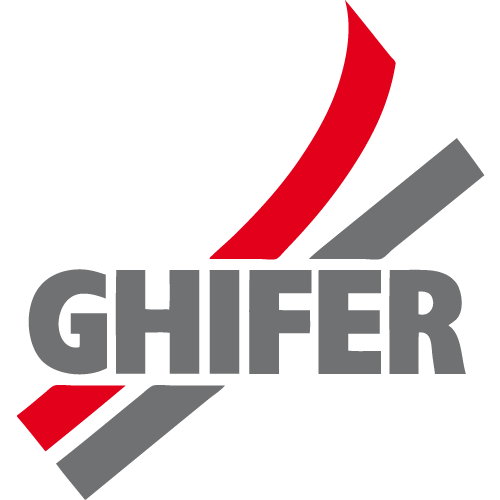UNI EN 16482:2014 standard specifies grades and technical characteristics of cast iron produced in continuous casting.
FLAKE IRON grades and SPHEROIDAL IRON grades
Cast iron is an iron-carbon alloy, whose carbon content exceeds 2.1%. Liquid carbon solidifies in graphite structure and depending on the shape assumed by graphite in the solidification process, cast irons are divided into two main groups:
FLAKE IRON grades and SPHEROIDAL IRON grades.
These two main groups can be divided into two sub-groups, according to the shape assumed by the iron mould (ferrite or pearlite) during the solidification : FERRITIC CAST IRON and PEARLITIC CAST IRON, both in flake iron grades and spheroidal grades.
Ferritic cast iron and Pearlitic cast iron
Ferritic cast irons have low resistance to fretting corrosion, lower hardness, higher dimensional balance in case of contact with heat, more ductility (spheroidal cast iron) and better heat dissipation. Cast irons totally ferritic are obtained by heat treatment of pearlite (complete ferritization treatment). Pearlitic cast irons have higher resistance to fretting corrosion, higher hardness and rigidity and higher mechanical properties compared to ferritic cast irons.
Flake iron grades - GJL – GJL250 GJL300
The main characteristic of this material is that graphite solidifies in lamellae shape, creating a discontinuity in the ferrous alloy composition and giving a good enhancement to the "self-lubricating" graphite effect (the seizure effect is extremely reduced) . There are very small chips during machining and lack of deformability (brittleness, no elongation before break) .
Spheroidal iron grades - GJS - GJS400 GJS500 GJS600
The main characteristic of this material is that graphite solidifies in spheroidal shape, maintaining continuity in the ferrous alloy composition. Spheroidal cast iron has higher tensile strength and a remarkable elongation compared to flake iron but the “self-lubricating" graphite effect is lower and there are many chips during machining.

CAST IRON
FLAKE IRON
CHEMICAL COMPOSITION %
| C | Si | Mn | S | P |
|---|---|---|---|---|
| 2.9 - 3.65 | 1.8 - 2.9 | 0.5 - 0.7 | 0.1 max | 0.3 max |
MECHANICAL PROPERTIES, HARDNESS AND STRUCTURE
The chart shows expected values.
Increasing the diameter size or the cooling modulus of the bar these values decrease, as flake irons are sensitive to thickness.
| Cast iron grade | Diameter or cooling modulus | H.B. Hardness range 2.5/187.5 | UTS (N/mm2) or (Mpa) Min.- | Mould structure | Graphite structure |
|---|---|---|---|---|---|
| GJL-200 | < 25 mm 25-50 mm 50-100 mm 100-200 mm > 200 mm |
150-210 140-200 130-190 120-190 120-190 |
180 155 130 115 |
Ring: Ferrite Core: Ferrite | Ring: Type ID/IE Core: Type IA2/4 with IB/ID/IE (20% max) |
| GJL-250 | < 25 mm 25-50 mm 50-100 mm 100-200 mm > 200 mm |
190-250 180-230 180-220 170-220 160-220 |
225 195 170 155 |
Ring: Ferrite Core: 70% Pearlite | Ring: Type ID/IE Core: Type IA3/5 with IB/ID/IE (10% max) |
| GJL-300 | C< 25 mm 25-50 mm 50-100 mm 100-200 mm > 200 mm |
210-260 200-240 200-230 190-230 190-230 |
250 235 210 170 |
Ring: Ferrite - Pearlite |
Ring: Type ID/IE Core: Type IA3/5 with IB/ID/IE (10% max) |
MACHINING ALLOWANCE FOR FLAKE IRON GJL250 AND GJL300
| Dimension (mm) | ROUND BARS minimum machining allowance | SQUARE and FLAT BARS minimum machining allowance |
|---|---|---|
| 25-50 55-75 80-100 105-150 155-200 210-280 290-350 360-430 |
2 mm 2 mm 2,5 mm 3 mm 4 mm 5 mm 7.5 mm 10 mm |
2.5 mm 3 mm 4 mm 4 mm 5 mm 5 mm 7.5 mm 10 mm |
NOTE:
This machining allowance is referred to the radius (for round bars) or to each side (for square and flat bars).
For example: to obtain the finished size Ø 40 mm, we need minimum Ø 45 mm as raw size.
To obtain the finished size 100x100, we need minimum 108x108mm as raw size.
ALLOWANCE FOR FLAKE IRON GJL250 AND GJL300
| Diameter (mm) | Allowance (compared to nominal size) | Maximum ovalization Ø-ø |
|---|---|---|
| 20-100 105-200 > 200 |
-0 / + 2 mm -0 / + 3 mm -3 / + 3 mm |
1 mm 2 mm 4 mm |